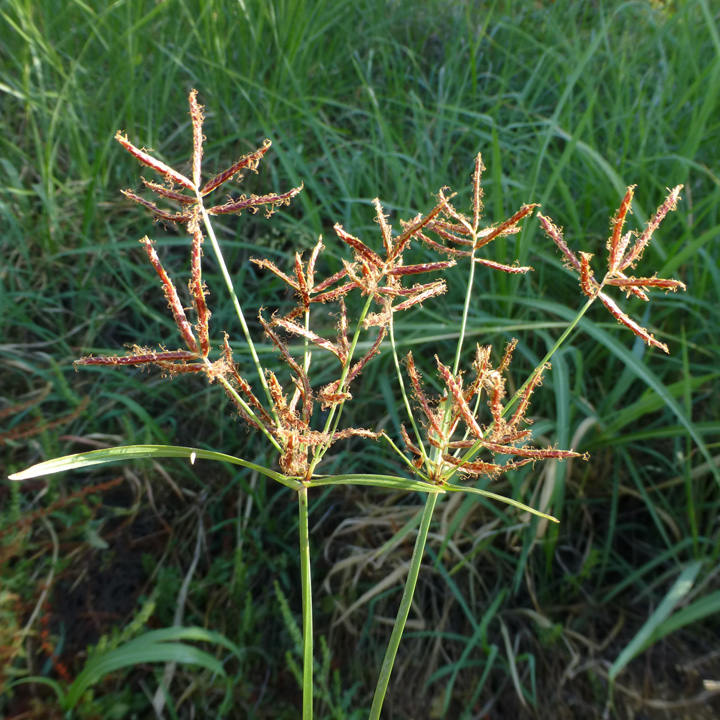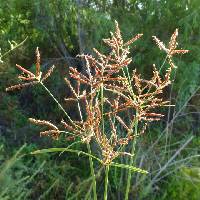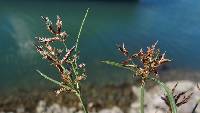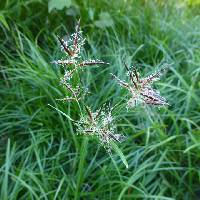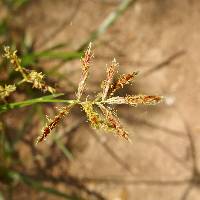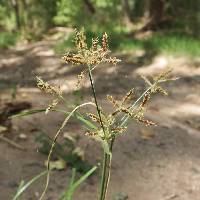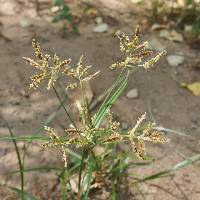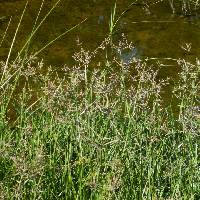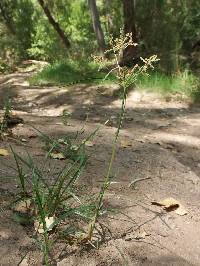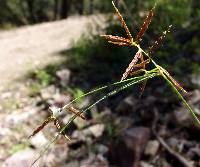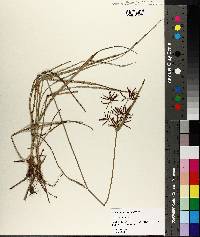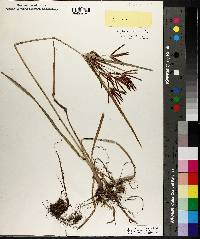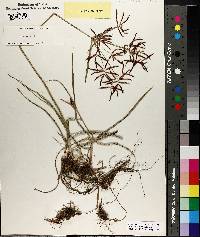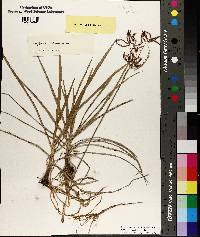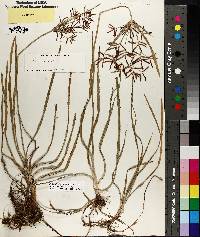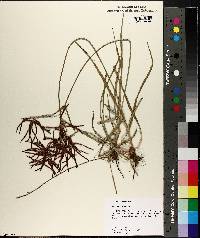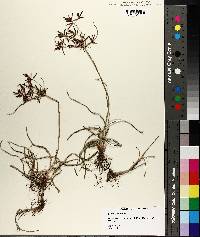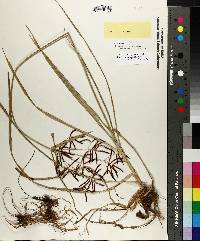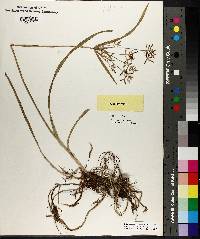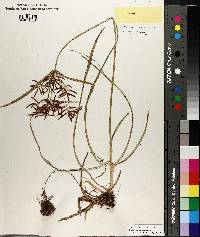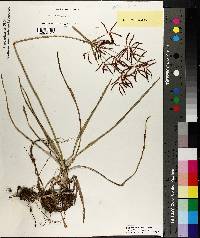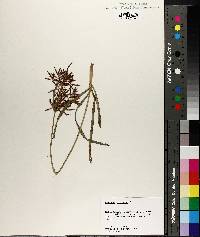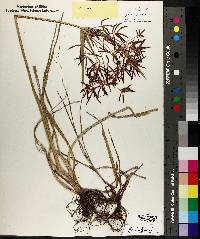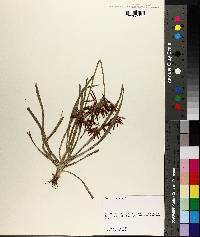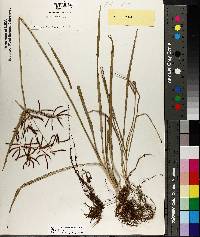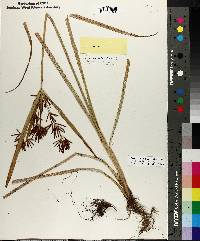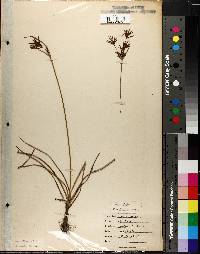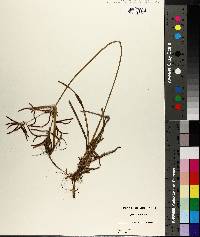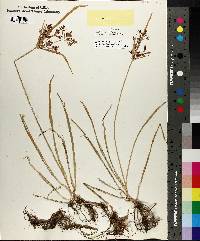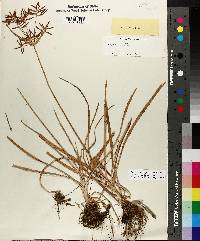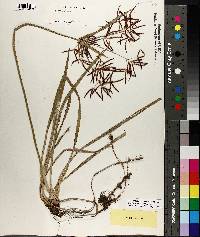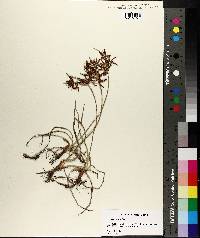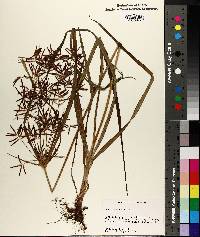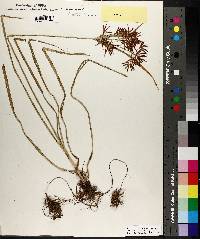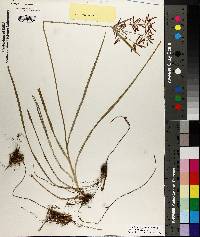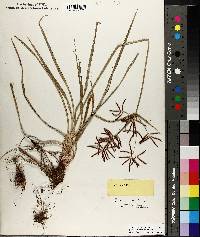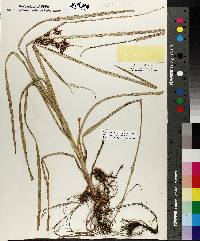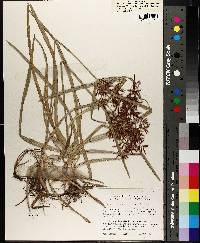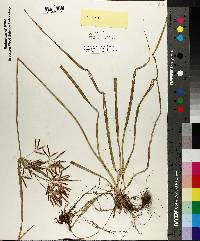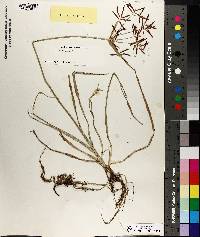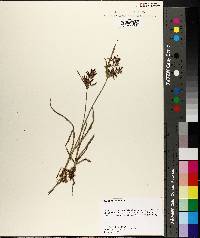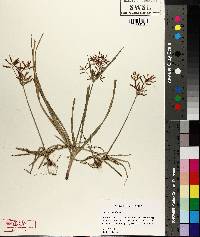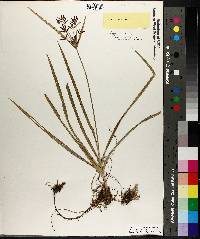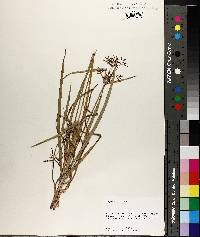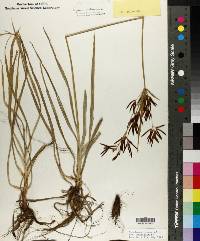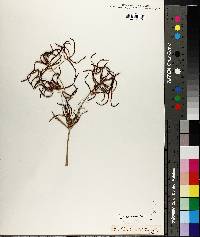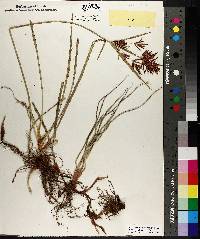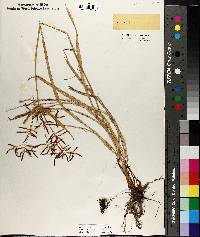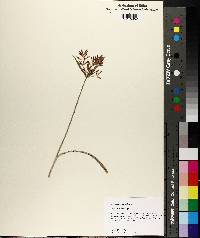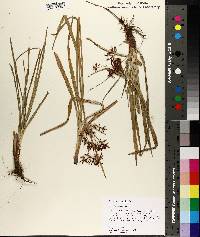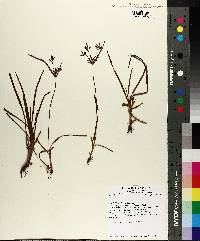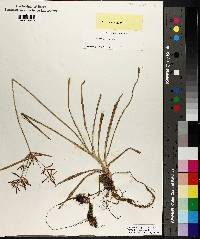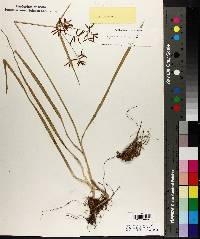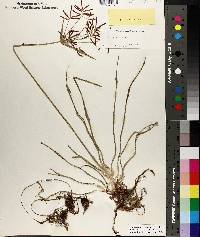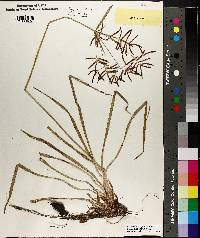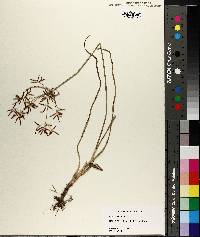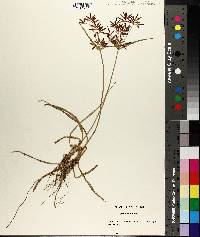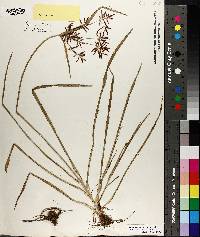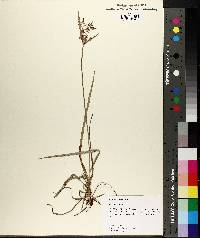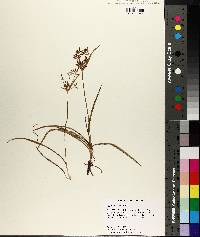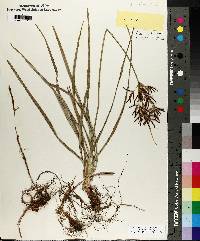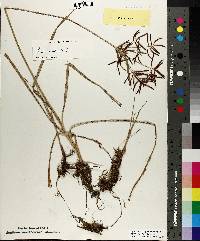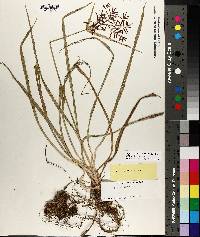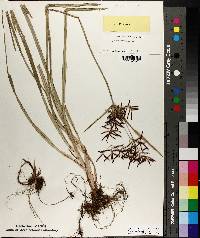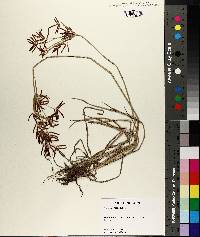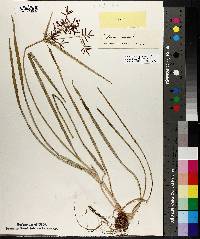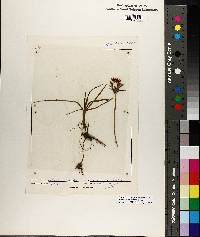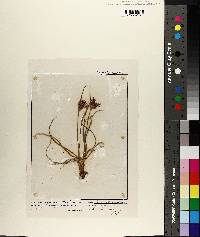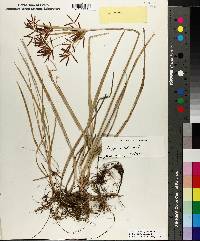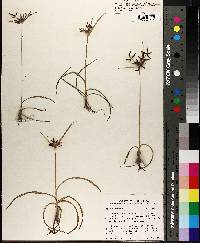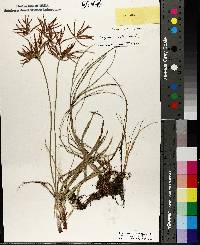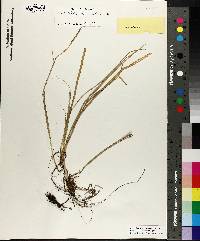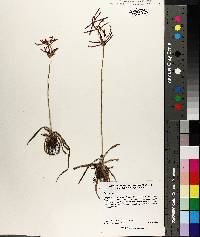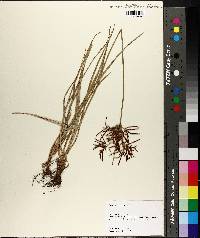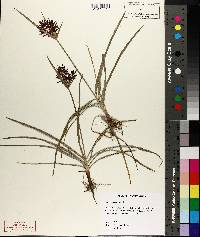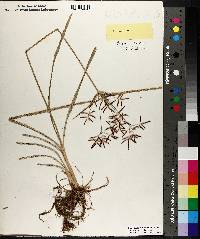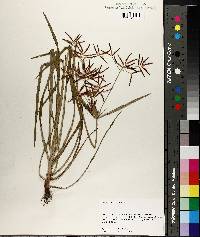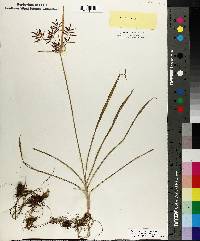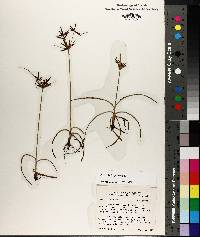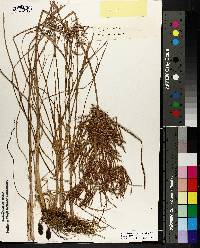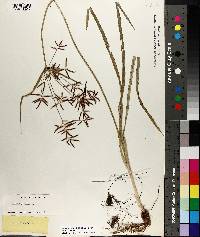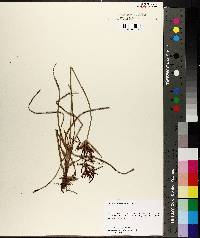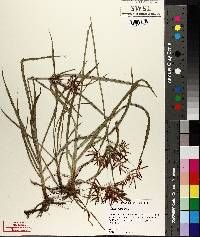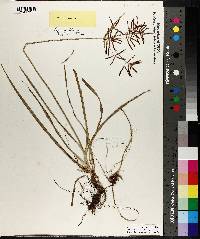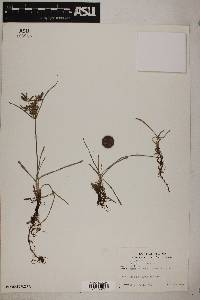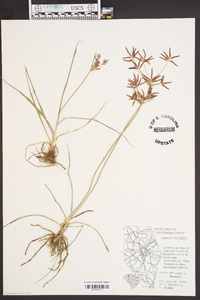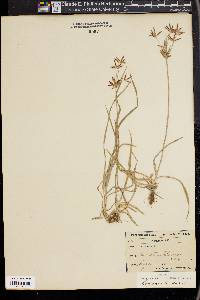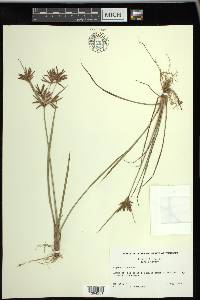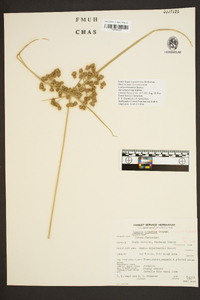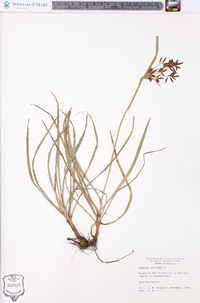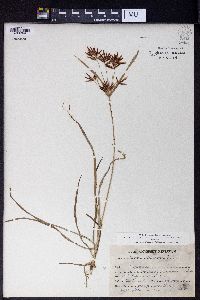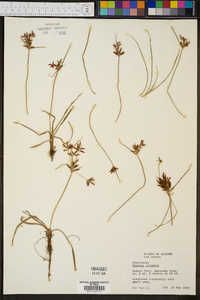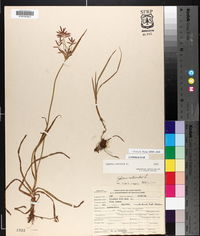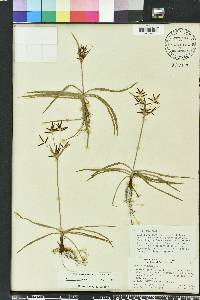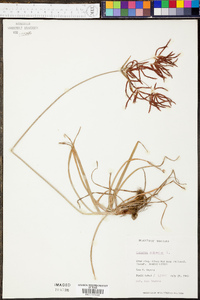
|
|
|
|
Family: Cyperaceae
nutgrass, more...Purple Flat Sedge, sedge, chaguan humatag, cocograss, kili'o'opu, pakopako, purple nutsedge (es: coquito)
[Cyperus olivaris O.Targ.Tozz., moreCyperus platystachys Cherm., Cyperus pseudovariegatus , Cyperus rotundus var. hydra (Michx.) A.Gray] |
Herbs, perennial, stoloniferous; stolons (2-)5-12 cm × 1-2 mm, bearing tubers 3-8(-12) mm diam., wiry, springy when dried, indurate. Culms trigonous, 10-35(-40) cm × 0.7-3.4 mm, basally indurate, glabrous. Leaves V-shaped to flanged V-shaped, 5-30 cm × 2-6 mm. Inflorescences: spikes 1(-3), broadly ellipsoid, (12-)15-25(-30) × (12-) Fruiting summer-fall. Croplands, disturbed soils usually; 0-400 m; Ala., Ariz., Ark., Calif., Fla., Ga., La., Miss., Mo., N.Mex., N.C., S.C., Tenn., Tex., Va.; Mexico; Central America; South America; Asia; Africa; Australia.
Tucker 1994, FNA 2002, Kearney and Peebles 1969 Common Name: nutgrass Duration: Perennial Nativity: Non-Native Lifeform: Graminoid General: Perennial with wiry indurate stolons, springy when dried, 5-12 cm long, 1-2 mm in diameter, bearing tubers 3-8 mm in diameter, stems 10-35 cm tall, 0.5-3.5 mm in diameter, three sided, smooth, hardened basally. Vegetative: Leaves 8-10, 5-30 cm long, 2-6 mm wide, v-shaped to flanged v-shaped, margins rough on the upper half. Inflorescence: Subtending bracts 3-5, 0.5-10 cm long, 0.5-4 mm wide, v-shaped to flanged v-shaped, margins and keel rough, borne horizontal to ascendent to 45 degrees; rays 4-6, up to 10 cm, spikes 1, 15-25 mm long, 20-30 mm wide, broadly ellipsoid, spikelets 3-7, 4-40 mm long, 1.3-1.8 mm wide, linear, compressed, persistent rachilla, less than 0.5 mm wide, straight, with successive scales 1.5-2 mm apart, often red-speckled; 6-36 persistent scales, 2.5-3.5 mm long, 2-3 m wide, ovate, purple to reddish brown; achenes about 1.5 mm long, about 1 mm wide, three sided, ellipsoid, apex obtuse, base sessile, black. Ecology: Found in a variety of habitats, often in disturbed sites. Notes: Distinguished by the open spikes of linear reddish spikelets borne on a conspicuous slender rachis. Only this species and C. esculentus produce tuberiferous stolons. Ethnobotany: The tubers were cooked and eaten, or eaten raw. Etymology: Cyperus is from the Greek word meaning sedge, while rotundus means rounded. Synonyms: None Editor: SBuckley, 2010 Perennial with numerous slender rhizomes ending in small tubers; stems 2-5 dm, smooth; lvs basally disposed, mostly shorter than the stem, 3-6 mm wide; bracts few, all or all but one shorter than the infl; rays 3-7, simple or sometimes branched at the top, to 10 cm; spikelets 3-10 in short-cylindric spikes, 10-40-fld, to 4 cm; scales closely imbricate, ovate, 2.5-3.5 mm, obtuse, keeled, 7-nerved (3 in the midvein, 2 nearby on each side), the sides purple-brown or red- brown; rachilla persistent, winged; achenes nearly black, narrowly trigonous-obovoid, 1.5 mm; 2n=108. A weed of sandy soil; pantrop., n. to Va. and Ky., and occasionally adventive farther n. Gleason, Henry A. & Cronquist, Arthur J. 1991. Manual of vascular plants of northeastern United States and adjacent Canada. lxxv + 910 pp. ©The New York Botanical Garden. All rights reserved. Used by permission. |
|
|
|

